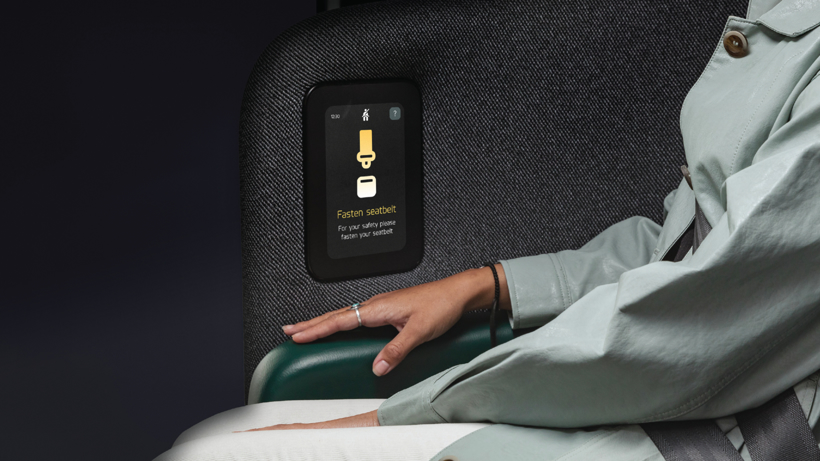Amazon's self-driving startup Zoox has released a report that aims to provide new insights into its custom electric self-driving cars, detailing various design details for preventing collisions and how to protect them when they occur,media reported.

(Image source: Zoox)
“A lot of people are talking about, are we building self-driving cars to achieve greater safety? But there’s always a new level of safety,” asked Mark Rosekind, chief safety innovation officer at Zoox and former director of the National Highway Traffic Safety Administration. “So what would you do to prevent an accident and save lives?”
Rosekind claims its latest report answers the above questions. Slightly different from its competitors, Zoox is responsible for creating an on-demand ride-sharing application and designing vehicles in addition to developing an autonomous driving software stack. The company also plans to own, manage and operate its own fleet of autonomous taxis.
In December 2020, Zoox launched a self-built electric self-driving robot taxi. The vehicle is shaped like a cube, equipped with sensors, but without a steering wheel or sunroof, can accommodate up to 4 people and can reach a top speed of 75 miles per hour. Zoox also announced some of the vehicle's specifications, including symmetrical seats facing each other like in a train, and a 133 kWh battery that can last for 16 hours on a single charge. But the company did not reveal everything, especially details about how the vehicle will protect occupants, pedestrians, cyclists, and other drivers who share the road.
Zoox's first safety report was released in 2018, outlining the company's "prevent and protect" philosophy. The latest report describes the process by which Zoox plans to achieve its safety goals, including specific details of vehicle design. The latest report also hints at more safety reports to be released, including details on the collision avoidance system and lighting system that the vehicle interacts with other road users.
Zoox has designed more than 100 safety innovations and integrated them into its purpose-built vehicles, and Rosekind shared details on nine of them, which fall into three categories: driving control, no single point of failure, and occupant protection.
Driving Controls

(Image source: Zoox)
Zoox's vehicle has independent braking and active suspension systems, which means each brake has its own electronic control unit to better control road traction and weight distribution, making stopping distances shorter. Rosekind said the vehicle has four-wheel steering, which is not available on all self-driving vehicles on the road today. This feature allows the vehicle to adjust its direction of travel and its position within the lane at the same time.
“Once our software determines the vehicle’s path, it stays on that path with centimeter-level accuracy, even as the vehicle passes the curb,” Rosekind said. Combining this four-wheel steering capability with the vehicle’s symmetrical design allows the vehicle to be driven in both directions. The two-way driving capability means no more U-turns or three-point turns, which are more complex, time-consuming, and make the occupants more vulnerable to oncoming traffic.
No single point of failure
Rosekind said the company designed its safety-critical systems to have no single point of failure. For example, the vehicle has two power systems. The motor, drive system and battery work in conjunction with each other. If one component in the system fails, the other will take over. The vehicle also has two batteries as well as a safety diagnostic system that monitors all hardware, software and firmware. Sensors such as lidar and radar are located at the four corners of the vehicle, each providing a 270-degree field of view.
In addition to monitoring, its diagnostic system will also mitigate identified faults or performance issues, for example by positioning sensors so that performance is not affected even if they are obstructed, or activating a cleaning system on the vehicle or changing it from two-way to one-way driving if sensor performance is degraded due to damage or debris.
Occupant protection

(Image source: Zoox)
Zoox's goal is to achieve five-star crash protection for every seat in the vehicle. Rosekind said its vehicles are currently undergoing crash testing, and the testing is going well and will be completed soon. The company has also designed a new airbag system that includes five different airbags: curtain airbags on both sides of the vehicle, front airbags that protect the head, neck and chest separately, and rear and side seat airbags.
The system has an airbag control unit that monitors the location and speed of a collision and determines which airbags need to be opened and in what order. Therefore, not every airbag needs to be opened immediately, but it is inflated according to the collision location and the severity of the impact. There are sensors in the vehicle's seats, seat belt buckles, and even the coating on the seat belt webbing that can determine whether the occupants are using seat belts. Rosekind said that the vehicle will only start after everyone has fastened their seat belts.
Previous article:Car "black boxes" will be mandatory in 2022, and accident appraisals will have numbers to rely on
Next article:Chuhang Technology's blind spot monitoring brings new business opportunities for intelligent driving
- Popular Resources
- Popular amplifiers
- A new chapter in Great Wall Motors R&D: solid-state battery technology leads the future
- Naxin Micro provides full-scenario GaN driver IC solutions
- Interpreting Huawei’s new solid-state battery patent, will it challenge CATL in 2030?
- Are pure electric/plug-in hybrid vehicles going crazy? A Chinese company has launched the world's first -40℃ dischargeable hybrid battery that is not afraid of cold
- How much do you know about intelligent driving domain control: low-end and mid-end models are accelerating their introduction, with integrated driving and parking solutions accounting for the majority
- Foresight Launches Six Advanced Stereo Sensor Suite to Revolutionize Industrial and Automotive 3D Perception
- OPTIMA launches new ORANGETOP QH6 lithium battery to adapt to extreme temperature conditions
- Allegro MicroSystems Introduces Advanced Magnetic and Inductive Position Sensing Solutions
- TDK launches second generation 6-axis IMU for automotive safety applications
- LED chemical incompatibility test to see which chemicals LEDs can be used with
- Application of ARM9 hardware coprocessor on WinCE embedded motherboard
- What are the key points for selecting rotor flowmeter?
- LM317 high power charger circuit
- A brief analysis of Embest's application and development of embedded medical devices
- Single-phase RC protection circuit
- stm32 PVD programmable voltage monitor
- Introduction and measurement of edge trigger and level trigger of 51 single chip microcomputer
- Improved design of Linux system software shell protection technology
- What to do if the ABB robot protection device stops
- Analysis of the application of several common contact parts in high-voltage connectors of new energy vehicles
- Wiring harness durability test and contact voltage drop test method
- From probes to power supplies, Tektronix is leading the way in comprehensive innovation in power electronics testing
- From probes to power supplies, Tektronix is leading the way in comprehensive innovation in power electronics testing
- Sn-doped CuO nanostructure-based ethanol gas sensor for real-time drunk driving detection in vehicles
- Design considerations for automotive battery wiring harness
- Do you know all the various motors commonly used in automotive electronics?
- What are the functions of the Internet of Vehicles? What are the uses and benefits of the Internet of Vehicles?
- Power Inverter - A critical safety system for electric vehicles
- Analysis of the information security mechanism of AUTOSAR, the automotive embedded software framework
- The Raspberry Pi with built-in keyboard is here. Is $70 a good deal?
- [Basic Operation Tutorial] How to use the ATG-2021H power signal source?
- Accelerating 5G network deployment in the n258 frequency band using compact 5G antenna technology
- MSP430 MCU interrupt
- When processing this signal, how do we calculate Z if we know the coordinates of Z-1, Z0, and Z1?
- Zigbee (CC2530) connected to esp8266 can only send but not receive
- Mini RP2040 development board minik
- Analysis of the Design Method of DSP and Slow Peripheral Device Interface
- 【LuatOS-ESP32】Download tool——Luatoose installation and use
- [ST60 short-distance evaluation] Part 1: First release on the Internet! Detailed evaluation!

 HFA1102Y
HFA1102Y











 京公网安备 11010802033920号
京公网安备 11010802033920号